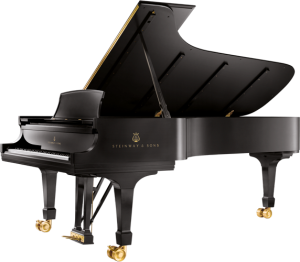I know I usually like to talk about guitars, banjos and basses but there is a an instrument that is crucial to almost every genre of music, the piano. I used to play piano and it is my second biggest music regret of all time, first was giving up the violin. Anyway, Steinway and sons has been making the best pianos out of New York for over 150 years. What really impressed me was this documentary called Note by Note The Making of L 1037. I loved watching the process of making a grand piano. Which if you have ever seen a grand piano it is enormous. To make one of these pianos takes a long time like a year long. Also like the best guitars it is all hand crafted, but you need about 10 different people to make parts of the piano. There is one guy who just makes the soundboard and nothing else. One person can make a guitar but the amount of work that goes into one of these masterpieces. It’s no wonder why they cost hundreds of thousands of dollars. Just like wood for guitars it has to be seasoned, dried and cured. It also need to be cured after it is built and tuned regularly for a month or so.
I would recommend this doc to anyone who likes pianos, woodworking or instrument building. I thought it was so cool. One more thing about it was that they interviewed a lot of famous pianists who rent out the Steinways for an evening performance or a tour. Just like every hand crafted guitar has a unique sound so does every Steinway and just like guitar manufactures are struggling with cheap imports, Steinway is too.
I was looking around on the site and it is impressive. They have all of their models and they just look beautiful. When I look at guitar and banjo specs I feel right at home, I know exactly what they are talking about. Here not so much. It is cool to see that they both use spruce and brass hardware is what is used on the top of the line models. I have talked about spruce but not Brass. I will in a later post but for now I’ll just say that brass is a prized metal for is sonority and popularity in instruments like saxophones and trumpets. Theses are also in the brass family of instruments. Also in banjos a brass tone ring is the sign a of a high quality instrument.
I saw it on Netflix so I believe you can still see it there. Otherwise you can buy it from PBS.
Here is the site
http://www.notebynotethemovie.com/
and if you have an interest in Steinway and Sons.


